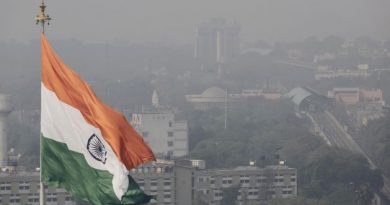Southwest Monsoon Withdrawal Delay to Help Fill Reservoirs, Boost Crop Production
 Representative photo of rainfall.
Representative photo of rainfall.
The southwest monsoon this year may have arrived fashionably late but after an energetic show, the rains have still not reduced in many parts of India and the withdrawal of monsoon is now officially delayed.
Usually, the withdrawal of monsoon begins Sept. 1 from Rajasthan and continues till Oct. 15 but it is yet to begin this year and now likely to begin only end September or early in October.
Monsoon rains hit India’s mainland nearly a week late this year but then made up handsomely for the delayed onset and then lazy progress till June with subsequent widespread and bountiful rains. Western India, especially coastal Maharashtra led by Mumbai and Gujarat, are still experiencing heavy showers.
India is now set to get “above average rainfall” with 882.9 mm rainfall recorded till Sept. 22, 5 percent above normal according to data available on Indian Meteorological Department’s website. India’s private weather forecaster Skymet says that the withdrawal has been delayed due to the formation of multiple weather systems.
“A depression is expected to form in the northeast Arabian Sea while a cyclonic circulation already persists off Andhra coast, and another low-pressure area will form off Odisha coast. As long as the systems continue to move towards central parts, easterlies continue over north and withdrawal is not seen until then. In fact, until Rajasthan continues to see easterlies, the withdrawal process does not begin.”
Cyclonic Storm ‘HIKAA’ over Arabian sea lay centred near Lat 20.4°N & Long 65.7°E,
about 490 km west-southwest of Veraval (Gujarat).To move westwards and cross
Oman coast between Lat 19°N & Long 20°N during early hours of 25th September 2019 as a deep
depression. pic.twitter.com/2qTVRJg0dm— India Met. Dept. (@Indiametdept) September 23, 2019
The withdrawal process is typically much faster and often takes just days and weeks like last year when the withdrawal began late and only on Sept. 29 but by Oct 5, it was complete from North, Central, East and Northeast India.
But a vigorous monsoon has meant that the water levels at India’s water reservoirs are now at 85 percent of their total capacity.
According to the bulletin issued by Central Water Commission on Sept. 19, “live storage available in these reservoirs is 144.179 BCM, which is 85 percent of the total live storage capacity of these reservoirs. However, last year the live storage available in these reservoirs for the corresponding period was 124.912 BCM and the average of last 10 years live storage was 117.650 BCM. Thus, the live storage available in 113 reservoirs is 115 percent of the live storage of corresponding period of last year and 123 percent of storage of average of the last ten years.”
Of course, we don’t have enough clarity on whether these figures take into account the impact of accumulated silt deposits in these reservoirs, which can reduce actual storage capacity. Readers need to know that India has no such policy on desilting of reservoirs, with most dams especially having never been desilted after their construction. Proper desilting can significantly increase carrying capacity over existing levels.
The intensity of the rains has bought much relief to areas facing near drought-like situations and the storage levels in the reservoirs give hope that if managed well, the water can be adequate for at least 2 years for many parts of India. That said, the rain fury did bring along the typical this-time-of-the-year stories of waterlogging, flooding and destruction.
Mumbai has taken the brunt this year with 3603.7 mm rainfall or 143.35 percent of annual average till Sept. 22, a new record for the city. Mumbai has seen many days of red alert this monsoon season, shutting schools and throwing airline and train schedules haywire.
A delayed withdrawal also complicates the announcement of the northeast monsoon which typically commences from Oct. 20 but now likely only by November.
“In terms of dates, there are large slippages for commencement, but withdrawal is complete by Oct. 20 latest as northeast monsoon sets in by then and both monsoons are not acknowledged at the same time. Withdrawal is seen only until 15 degrees north which includes all states and cities after Goa,” said Skymet.
The progress of monsoon has been a mixed bag for farmers so far. With its best performance since 2014, widespread and heavy monsoon showers have washed away some of the drought fears and also helped speed up the Kharif season sowing progress. Though the damage caused by extensive flooding and even heavy rainfall could actually hurt the preparedness of farmers for the sowing season besides causing damage to many vegetable crops, which has already caused price spikes.
The government still expects higher Kharif crop production than last year which was at 141.71 million tonnes. And with the delayed withdrawal, higher moisture in the soil will also help the upcoming Rabi sowing season which usually begins from mid-November, after the monsoon rains are over.




